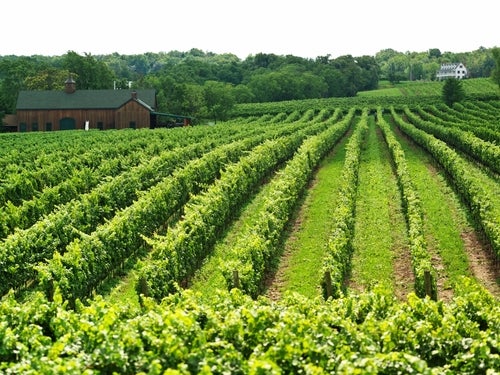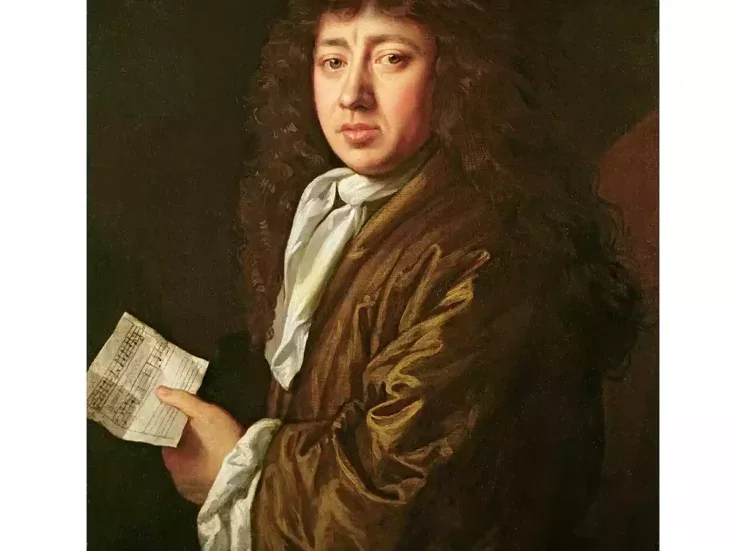Andrew Jefford is inspired by a single bottle of Pepe Raventós 2010 Mas del Serral Conca del Riu Anoi, an elemental Catalan sparkling wine.
The wine’s bright. A pale gold, though true gold for all that: gold you might imagine finding among shadows. Something precious, old, hidden; wamth and wealth, carefully laid aside for later.
There’s a steady stream of fine bubbles: seams of life now unwrapped, liberated, murmuring in the glass. My bottle (number 132 out of 2,047) needed air to clear a little. That’s fine: it’s the wine of a farm, and you need to meet the farm first. You need to walk out of the city and on to the farm. You need to leave ducts and upholstery and cleanser behind you.
And then, adjusted, naturalized, you will find the treasures of the farm laid out before you, as precisely as in the painting itself. Which painting? More of that a little later. Enjoy, first, the smells of straw, of almonds, of shelled beans, of thyme, of the hive. The wine is busy with scent, as the farm is with life.
Raventós and the Romanesque
We can see a shape forming already: round, arched, brick-thick, fat-stoned, Romanesque. This is Romanesque wine in a genre dominated, for too long, by Gothic ideals. Forget Reims Cathedral, its beaky angel and its soaring, icy interior. This sparkling wine is the cloister of Santo Domingo de Silos: a honeycomb of light, chased about by the dragons, centaurs, and mermaids imagined by lost stonecarvers.
The wine is pure in the mouth; it’s larger and richer than you may have expected. The bubbles swarm the tongue like bees, pollen tumbling from their legs.
The wine’s acidity is more like a sea swell, carrying the inner contours of flavor: all lemon, no apple. Tannin, too, sensed as much as felt: an abiding austerity inside the richness, rendering it limpid and uncloying.
Earth, bitter plants, lemons, straw, dry hillside grasses, herbs, stone, dust—and the sun on all, the sun that bakes the earth of the farm brown, the sun that sets the cloisters aglow. Spotless, elemental, taut, and shocking: that is what illumination does. Yet tender, too. Like the farm.
The farm is Miró’s La masía: nine months’ work between 1920 and 1921: “minute realism,” he said, “as far as I could take it.” It teems with life, light, warmth—but no chaos; the scene is as intricately constructed as a watch.

La masía, by Joan Miró. Painting a gift of Mary Hemingway to The National Gallery of Art, Washington DC
Like most watches, and like most Romanesque churches, too, it is round; the painting is structured horizontally as well as vertically. All the parts of life fit together here in a complementarity of purpose, a community of being neither happy nor sad; there is no yearning for Gothic escape.
Paths leading where they need
In September 1925 in Paris, Ernest Hemingway bought this painting for 5,000 francs as a birthday present for his first wife, Hadley. She kept it after their divorce—though Hemingway subsequently “borrowed” it. For the rest of his life. “It contained,” he wrote, “all that you feel about Spain when you are there, and all that you feel when you are away and cannot go there.”
It was squabbled over after his suicide, and eventually left by his fourth wife and widow Mary to the National Gallery of Art in Washington.
Pepe Raventós saw La masía when loaned to the Tate Modern in London for Miró—The Ladder of Escape in 2011. He was, he says, “far from home” at the time: “relaxed, sensitive, and open to learning.”
The painting was an epiphany. It stirred memories of the remote Pyrenean farmhouse at Feitús that his own family had restored at weekends when he was younger, just as Miró was painting (in Paris) from his recollections of the family farm at Mont-roig del Camp near Tarragona, where he had gone to recover from typhus.
Joan Miró had leaves and flowers sent to him in envelopes from Mont-roig to Paris as he struggled to finish it, surrounded by gray skies, the smell of sewers, pandemic chaos. Goats, rabbits, hens, a barking dog, a tethered donkey patiently circling a millstone, a woman bent over a washing trough; bottles, buckets, baskets. The walls of the farmhouse crack and stain like a shoreline, while stones rise from the ground in strangely encrusted perfection.
“I saw the light, I visualized this farm.” The winemaker in 2011 echoed the painter in 1921. “That’s where I belong, it’s where I’m from. It’s my origins. That’s what we have in the Mediterranean. That’s our climate, those are our animals … our plants. That is what we can offer.”
Restoring the farm organism
This wine already existed, but La masía crystalized his views about what Mas del Serral should be: “a pathway with a single destination: the origin. Maximum potential of the plot. Xarel·lo; austerity. Minerality, salinity.”
Since then, Raventós has been trying “to restore the farm organism” and thereby discover “how the past and the future meet.” He has gathered animals about him; he’s gone back to the old ways.
No less important—and perhaps this is where others lose their way—he has tried to lend the act of winemaking creation the sincerity of artistic endeavour. This he does not claim, but it’s what I see.
I don’t mean that 2010 Mas del Serral is “a work of art”; no wine is a work of art. But it’s Pepe Raventós’ way of telling the truth about a place, his place, and that truth is something beautiful which we can take with us on our own journeys. Mas del Serral, he says, is “a camí—a path. It will reach where it has to go.”






